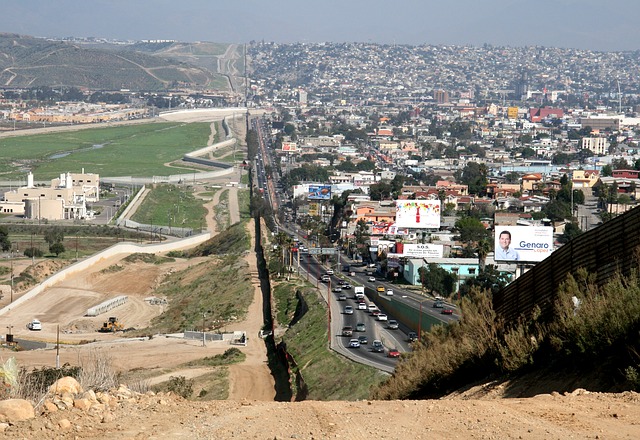Mexico is Arizona’s top trading partner, accounting for about 30 percent of the state’s exports to foreign markets, according to an extensive ongoing study by the Eller College of Management at the University of Arizona.
With that in mind, it’s no wonder that business leaders, trade experts and economists agree the cross-border relationship is of the utmost importance to Arizona when it comes to trade, manufacturing, education, safety, tourism and more.
The Arizona-Mexico Commission celebrated its 60th anniversary this year. The organization works to improve economic prosperity and quality of life for Arizonans through close public and private collaboration with Mexico.
“If 60 years of work with the Arizona-Mexico Commission has taught us anything, it’s that we achieve so much more when we work together,” said Gov. Doug Ducey earlier this year. “It’s with a spirit of friendship, and as partners, that we will continue working together toward a brighter future for our families and communities.”
Ducey has been instrumental in enhancing the AMC’s effectiveness throughout his tenure as governor, calling the relationship between Arizona and the Mexican state of Sonora an “ethnocultural entity that precedes even the existence of both Mexico and the United States.”
According to the AMC, visitors from Mexico contribute more than $7 million a day to Arizona’s economy by shopping in stores, eating at restaurants, staying in hotels and spending money at businesses in the state.
“Our trade numbers are looking fantastic through the first three quarters of 2019,” said Luis Ramirez, president of Ramirez Advisors International and an expert on Arizona-Mexico issues.

Ramirez said the early half of 2019 saw a drop in the number of people crossing the border into the United States, which he attributes to the “hardening” of the border under the Trump administration, including reassignment of Customs and Border Protection officers away from ports of entry to support Border Patrol operations.
Though Mexican visitors at first hesitated to travel to the U.S. in 2019, Ramirez said those numbers have begun to turn around in Q3, and the volume of trucks moving northbound through Arizona ports of entry has increased substantially.
“San Luis is going up almost 26 percent; Nogales is going up almost 5 percent,” he said. “A 5 percent increase may not sound like much, but for Nogales that translates to almost 12,000 additional trucks over the same period as last year.”
Ramirez said he expects both Nogales and San Luis ports of entry to set new records for the number of trucks crossing the border into the U.S. in 2019.
Fresh produce is one of the biggest industries that feeds the international economy in Arizona, and tomatoes imported from Mexico make up a significant part of the supply of fresh tomatoes in the U.S.
The U.S. imported $1.9 billion worth of fresh tomatoes from Mexico in 2016 — about 3.4 billion pounds — which represent 40 to 50 percent of the national supply, according to a 2018 report by the UArizona College of Agriculture and Life Sciences.
“U.S consumers enjoy a wide variety of fresh fruits and vegetables year-round,” the report read. “This is facilitated by the United States importing produce from countries that can grow crops during times of the year when production is not possible in the United States. Even though it is grown and harvested elsewhere, produce grown abroad supports economic activity, jobs and income in the United States.”
Mexico is Arizona’s No. 1 destination for manufacturing exports, due in part to Mexico’s maquiladora sector and IMMEX (Industría Manufacturera, Maquiladora y de Servicios de Exportación) program.
Arizona’s manufacturing exports to Mexico have increased from less than $3 billion in 2001 to more than $6 billion in 2018, according to data collected by the Eller College.
One industry that Arizonans tend to overlook — but which is significant to both Arizona and the state of Sonora — is mining, Ramirez said.
“They’re huge job-creators, and they typically create jobs in rural parts of both Arizona and Sonora,” he said. “Though there may be different companies who are making the investments, the mining supply chain is blossoming.”
That’s the reason, for example, that Caterpillar moved its mining division to Tucson a couple of years ago.
Ramirez said mining is emerging as a huge source of new investment in Arizona and Sonora’s border communities, offering high-paying jobs for skilled workers in job-scant areas.
“We hear mine after mine working on both sides of the border with universities and colleges — particularly trade schools — for training of prospective employees,” Ramirez said. “Those are long-term impacts that we see in the communities.”
He said the two entities are intrinsically tied — Arizona and Sonora, and Arizona and Mexico — through history, culture, environment, business and tourism.
Family ties that span decades and generations exist between Arizona and its southern neighbors, and tourism dollars flow from the U.S. into Mexico all year long.
Ramirez said Arizona visitors to Puerto Peñasco, Mexico — also known as Rocky Point — account for more than half a billion dollars for the state of Sonora.
“And it’s important for job creation, for investment in Mexico, so that people stay in Mexico,” he said. “They have jobs rather than having to look somewhere else.”
Tourism works both ways, too. Ramirez said the Arizona border communities of Douglas, Nogales and San Luis receive anywhere between 60 and 70 percent of their retail tax revenue from Mexican visitors.
For bigger cities farther north, that number can be lower, but it’s still significant — Ramirez estimates Mexican visitors account for about 25 percent of sales tax in Yuma and more than 10 percent in Tucson.
Ramirez’s biggest piece of advice for those interested in supporting Arizona-Mexico collaboration: Stay informed, especially beyond big, sensational headlines.
“There are security issues, and we cannot deny them… they’re having an impact,” he said. “But that’s not all that Mexico is. It’s still a great place to visit; you just have to be conscious and aware.”
Ducey has worked closely with Sonora Gov. Claudia Pavlovich to increase ties between the two neighboring states and to increase safety for tourists from both states traveling across the border.
“I think Gov. Ducey and Gov. Pavlovich have instilled this ‘let’s work together’ attitude — let’s work together on everything from security, to trade and economic development, to working together on job creation, to working together on our infrastructure,” Ramirez said.
He said most people don’t realize that Mexico invested $1.8 billion in improving the Arizona-Mexico corridor on the southern side of the border, saving trucks from Mexico City between 4 to 12 hours to get to the U.S. border with Arizona.
“There are so many things that are happening, and because of the leadership of these two individuals, it’s really easy to work side-by-side across the border,” Ramirez said.
This story was originally published at Chamber Business News.




